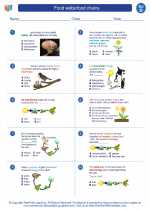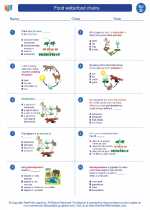Astronomical Events
A variety of fascinating astronomical events occur in our universe, providing opportunities for observation and study. These events can include phenomena such as eclipses, meteor showers, comets, and planetary conjunctions. Understanding these events can deepen our appreciation for the workings of the cosmos.
Eclipses
Eclipses occur when one celestial body moves into the shadow of another. There are two main types of eclipses: solar and lunar. During a solar eclipse, the moon passes between the sun and the Earth, blocking the sun's light and casting a shadow on the Earth's surface. In a lunar eclipse, the Earth comes between the sun and the moon, causing the Earth's shadow to fall on the moon. Eclipses are awe-inspiring events that provide scientists and observers with opportunities to study the dynamics of our solar system.
Meteor Showers
Meteor showers are celestial events in which numerous meteors enter the Earth's atmosphere within a relatively short period of time. These meteors are often remnants of comets or asteroids, and as they burn up in the Earth's atmosphere, they create streaks of light across the sky. Meteor showers can be predicted in advance, and they provide astronomers and skywatchers with opportunities to observe and study the composition and behavior of these cosmic visitors.
Comets
Comets are small, icy bodies that orbit the sun. When they come close to the sun, the heat causes the comet's ice to vaporize, creating a glowing coma and distinctive tails that can be seen from Earth. Comets have fascinated astronomers for centuries, and their appearances in the night sky provide opportunities for scientific study and observation.
Planetary Conjunctions
Planetary conjunctions occur when two or more planets appear close together in the sky as seen from Earth. These events are a result of the planets' orbits around the sun, and they can create stunning visual displays. Planetary conjunctions provide astronomers with opportunities to study the positions and movements of planets in our solar system.
Study Guide
Key Concepts
- Definition of astronomical events
- Types of eclipses: solar and lunar
- Causes and characteristics of meteor showers
- Composition and behavior of comets
- Significance of planetary conjunctions
Study Questions
- What is an astronomical event?
- Describe the differences between solar and lunar eclipses.
- How do meteor showers occur, and what can they reveal about cosmic objects?
- What are comets, and why are they of interest to astronomers?
- Explain the significance of planetary conjunctions in the study of our solar system.
Activities
- Research and create a presentation on a famous historical astronomical event, such as Halley's Comet or a notable eclipse.
- Observe and record the details of an upcoming astronomical event, such as a meteor shower or planetary conjunction.
- Discuss the cultural and historical significance of astronomical events in different societies around the world.
◂Science Worksheets and Study Guides Fourth Grade. Food webs/food chains

 Activity Lesson
Activity Lesson
 Worksheet/Answer key
Worksheet/Answer key
 Worksheet/Answer key
Worksheet/Answer key
 Worksheet/Answer key
Worksheet/Answer key
 Worksheet/Answer key
Worksheet/Answer key
 Vocabulary/Answer key
Vocabulary/Answer key
 Vocabulary/Answer key
Vocabulary/Answer key
 Vocabulary/Answer key
Vocabulary/Answer key
